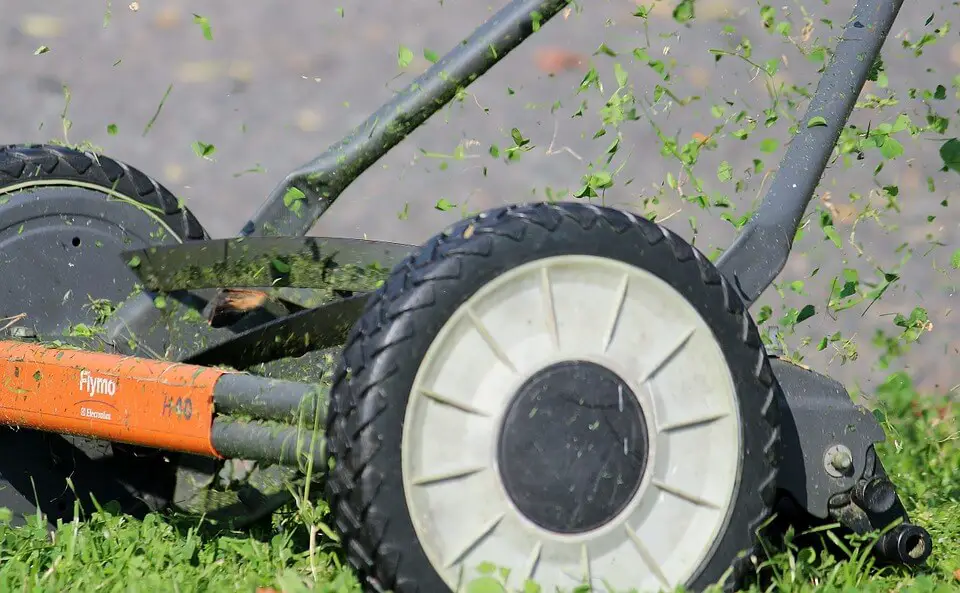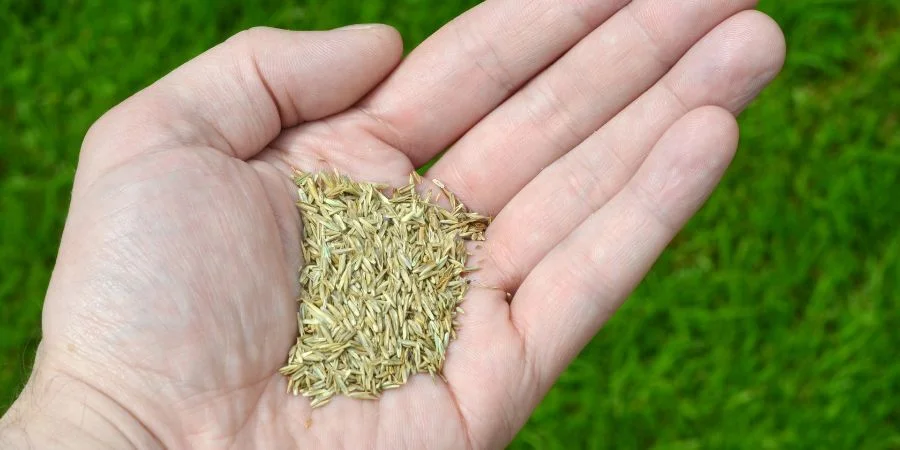Expert Guide On How To Fix Exposed Tree Roots in Your Lawn
Last Updated on May 26, 2025 by Duncan
Imagine your yard with big roots exposed, snaking, or curling on the soil surface around your tree. It’s a disturbing scene.
Tree roots are designed to grow below the soil, so they have been forced when you see them exposed.
Plenty of factors can force the roots to be exposed to the most common ones being:
Lack of space: If the tree is hemmed into a small area by streets, sidewalks, or buildings, the roots won’t have enough space to grow.
When a growing root comes across an obstacle such as a curb or foundation, it’s deflected to the surface, hence exposed to everyone.
People trampling on the tree root zone: When you have kids or even adults playing around the tree, they may wear away the soil or pack it down so far that the roots are exposed.
Erosion: Erosion is common in slopes where the roots are exposed to the surface due to rain or wind erosion.
Tree species: Some trees such as poplars, maples, and willows grow surface roots that give your yard a cheap look.
Exposed tree roots are at the risk of damage where they can be sliced by lawnmowers, string trimmers, or even torn by foot traffic.
To protect them, you need to learn how to fix exposed tree roots.
Other issues that come with exposed tree roots
Other than the exposed tree roots being at the risk of getting damaged, they bring about plenty of other issues that include:
Damage to landscaping equipment: As you know, tree roots are tough, so they can be hazardous for lawnmowers and other mechanical equipment to easily be damaged when they come into contact with the surfaced roots.
Trip hazard: Having exposed roots on your front yard means you and your family members are always at the risk of tripping as you are moving around. Sometimes you might trip so hard that you break a toe.
Risk of diseases, infestation, and rot: As mentioned above, the roots are at the risk of getting damaged, which puts them at the risk of easily getting infected by disease or infested by insects that might be carrying harmful pathogens.
Damage to your sidewalk and driveway: As the roots growing under sidewalks, foundations, and driveways thicken, they can exert a lot of pressure and raise or even break the surfaces.
Lawn damage: The exposed roots damage your grass, and you end up with a patched lawn.
How to fix exposed tree roots
To end the problems that come with having tree roots, you should strive to fix the issue as fast as possible.
Luckily, there are plenty of ways you can do it. Many people rush to add topsoil and cover the roots.
While this will provide some relief, it’s not long-lasting. Unless you get the grass to grow beautiful and thick, it’s only a couple of a few years, and you will be back to where you started.
Other people create a big bed around the tree trunk and even sometimes add a garden bench.
While this will hide the roots, you will be depriving the tree of water and other essential nutrients.
Due to the large bed, the tree won’t be receiving the right amount of water it’s supposed to. When the amount is too low, it’s only a matter of time before the tree dries out.
At this point, you must be wondering, what is the best way to fix exposed tree roots? There are many of them, with the most common ones being:
Covering the tree roots with mulch
A layer of mulch not only covers the roots, but it also cushions and insulates the roots, and at the same time, minimizes soil erosion. There are plenty of mulching materials you can choose from.
For best results, go with a material that won’t absorb a lot of water meant for the tree.
Some of the excellent options you have include:
Pine straw: Pine materials aren’t absorbent; hence will allow moisture to reach the tree roots.
Shredded wood mulch: Wood mulch tends to absorb a lot of moisture, so avoid placing too much of it at the base of the tree. For ideal results, use a layer that is only 1 inch thick.
Pine bark nuggets: When you choose pine bark nuggets, ensure you first remove the old chunks before placing new ones, or the old mulch will absorb a lot of moisture, depriving the tree of the precious commodity.
When laying the mulch, ensure it’s no more than 3-4 inches thick. If the roots are too thick, you may have to add more mulch, but take caution you don’t add too much that you smother the roots.
You also should ensure you don’t pile too much mulch against the tree trunk as it might cause the bark at the bottom to get diseased.
Always leave a little space between the mulched area and the base of the tree.
Plant ground cover to cover the roots
An ideal ground cover shouldn’t require a lot of sunlight or moisture. Some of the best options are:
- Ajuga
- Monkey grass
- Wild violets
- Asiatic jasmine
- Periwinkle
Begin with breaking up the compacted topsoil between the tree roots using a spading fork.
As you are doing it, take care not to damage the roots or go deeper than 1 inch into the soil.
After breaking up the soil, add garden soil to the area taking care not to layer more than 2 inches of new soil.
Remember, if you add too much new soil, the tree roots will suffocate, putting the tree at the risk of dying.
You should then add some fertilizer to keep the tree healthy and prevent ground cover plants from using too many valuable nutrients.
After applying the fertilizer, now plant your desired plant.
Lay stepping stones
Are you more bothered about tripping on the exposed roots? You should lay stepping stones around the roots.
The ornamental stepping stones look good and significantly add decoration to the lawn.
Don’ts when fixing exposed tree roots
Don’t remove the exposed tree roots: Sometimes, you might think that cutting or pruning tree roots will solve the problem, but you should know the practice is highly risky as you cannot only hurt yourself, but also even injure or even kill the tree.
Cutting the roots also makes the tree unstable, putting it at the risk of falling over in stormy conditions.
Don’t grow new grass: Grass takes time to establish fully, so in the event, erosion comes about before the grass has attached fully to the ground, you risk going back to square one.
In addition to this, lack of sunlight might lead to the grass dying, leaving the roots exposed, which is a waste of time and money.
Don’t cover the roots with concrete: It’s one thing to make a path around the roots and an entire ball game to pour a concrete coat on the exposed roots.
Concrete blocks tree roots from oxygen and water, putting the tree at the risk of drying up.
If the tree doesn’t die, the roots grow and break the concrete creating a huge mess.
Can you avoid exposed tree roots?
Yes, you can do it using these tricks:
Don’t plant trees too close to a building or paths.
One of the reasons you have exposed roots is because the roots are facing an obstruction. This can be a sidewalk, footpath, or house foundation.
To avoid exposed roots from coming about, plant shade trees no closer than 6 feet (meters) from the pavements and sidewalks.
The trees should also be at least 15 feet (5 meters) from the house foundation.
Plant the right tree species
Some tree species are more prone to root exposure than others.
According to Wikihow, root exposure issues often come about when you grow fast-growing shade trees such as silver maple, willow, Arizona ash, and poplar.
When selecting trees to plant on your property, go with slow-growing species such as:
- Sugar maple
- Red buckeye
- Linden
- Colorado blue spruce
- Japanese maple
Prevent soil erosion
If your yard is prone to soil erosion, you need to consult a soil erosion expert who will undertake a battery of tests and recommend the best way to solve the issue. Some of the ways you can do it include:
Covering bare patches with mulch or ground cover plants, especially on the slopes
Putting a layer of mulch around the bases of newly planted trees
Taking care not to overwater the plants, so you don’t wash away a lot of soil.
Use coconut fiber mats or jute netting to keep the soil in place until the cover plants have established


